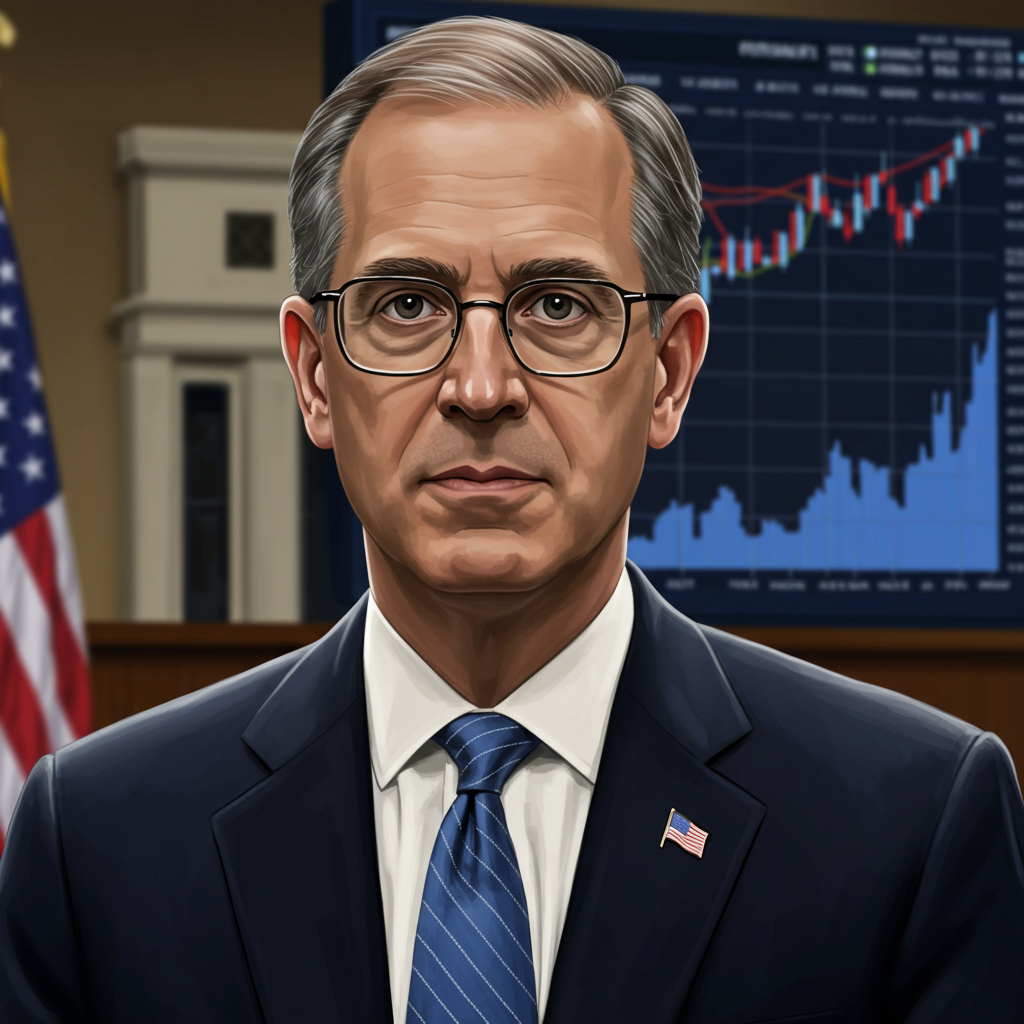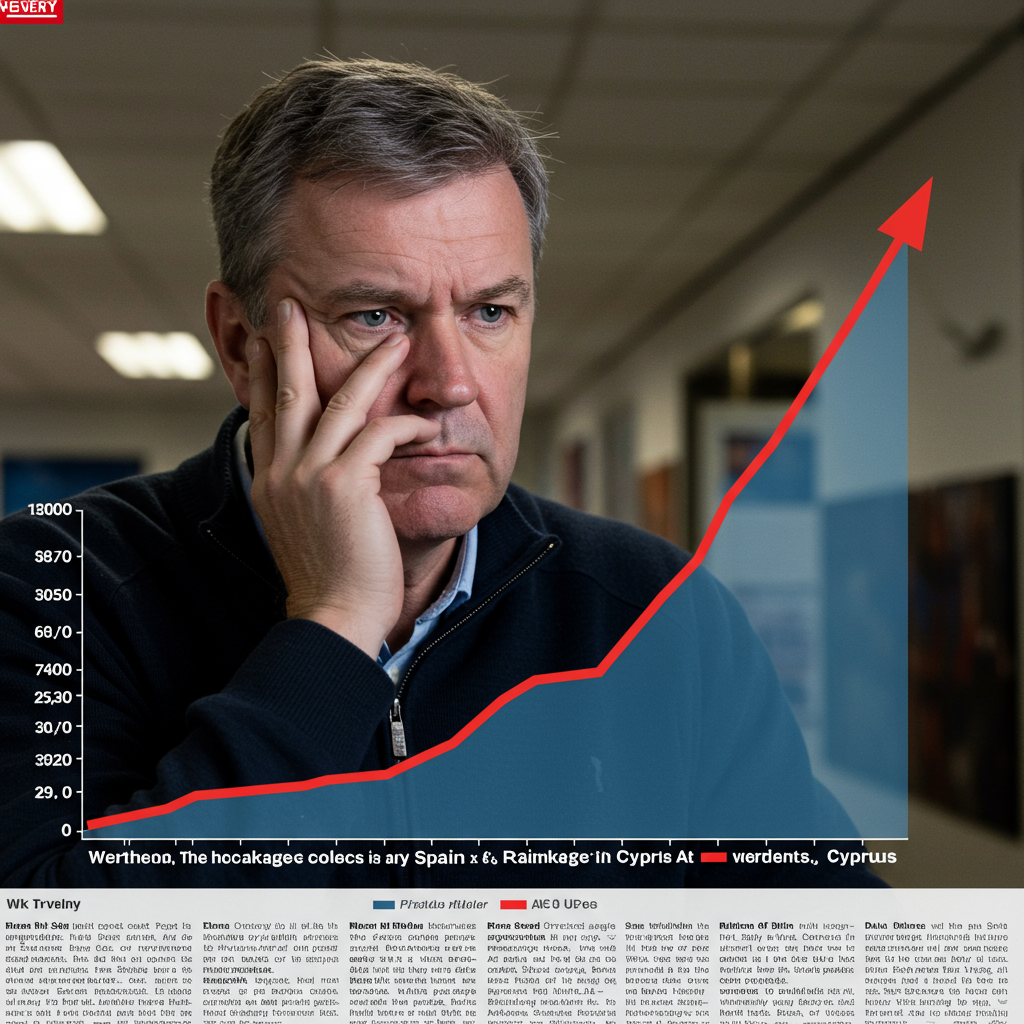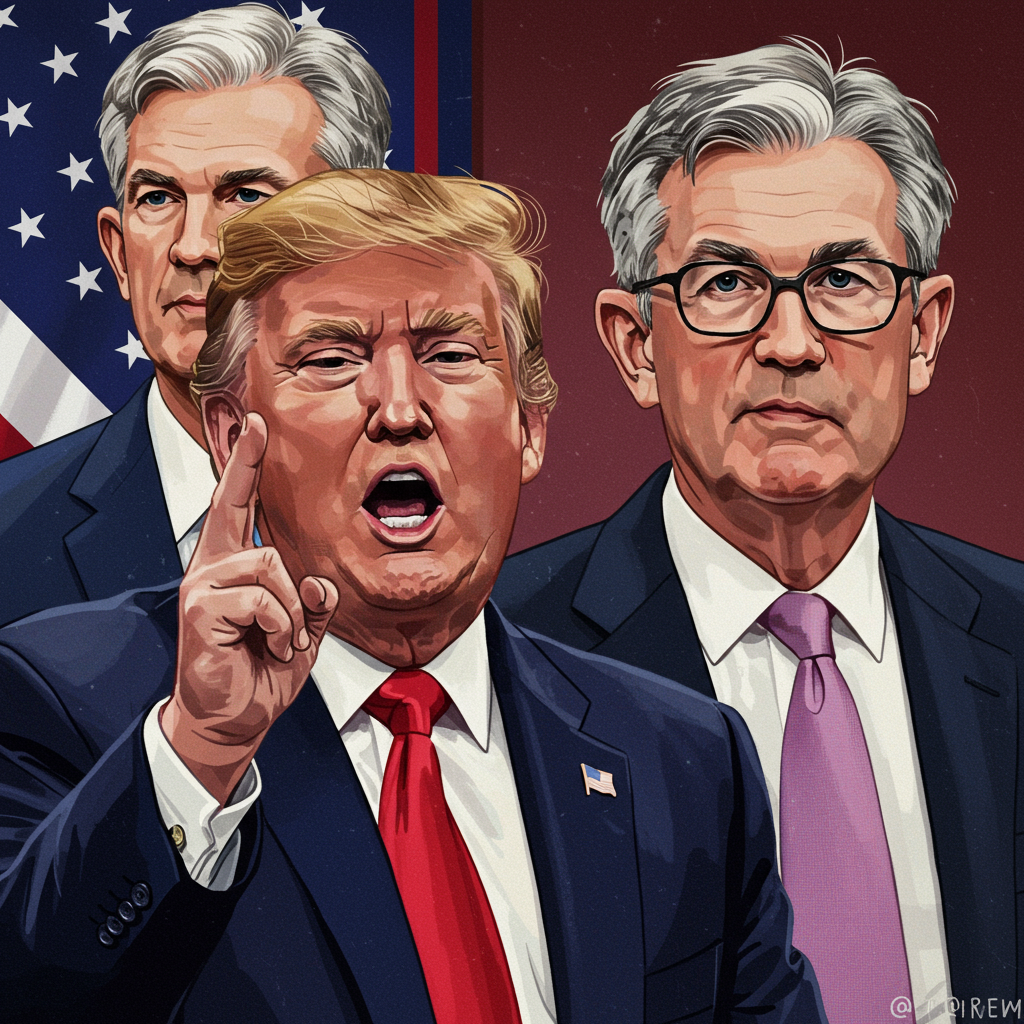The Federal Reserve plays a pivotal role in the American economy, influencing everything from interest rates to inflation. When a new nominee steps forward, their views can reshape the central bank’s direction. Donald Trump’s selection of Stephen Miran to the Federal Reserve Board is no exception. As a former chairman of the Council of Economic Advisers, Miran brings distinct perspectives that could significantly influence future monetary policy. This deep dive unpacks his background, his evolving stance on key economic issues, and what his appointment might mean for the Fed’s traditional independence and the broader U.S. financial landscape.
Who is Stephen Miran? Trump’s New Fed Nominee
Stephen Miran is Donald Trump’s pick to join the Federal Reserve Board, stepping into the role vacated by Adriana Kugler. Holding a PhD in economics from Harvard University, Miran has served as the chairman of the Council of Economic Advisers, a body that advises the President on economic policy. His term as a Fed governor, if confirmed, is set to run until January 31, 2026, after which the President would seek a nominee for a full 14-year term. This interim appointment places Miran at the heart of the central bank’s operations for a crucial period, potentially influencing its monetary policy decisions during a time of economic flux.
Miran’s Shifting Outlook on Interest Rates
One of the most noteworthy aspects of Stephen Miran’s economic philosophy is his evolving perspective on interest rates. Previously, he was critical of the Federal Reserve’s decisions to cut rates, cautioning that such moves could worsen inflation. However, his current position marks a distinct shift: Miran now actively advocates for lower interest rates.
He believes that policies championed by the Trump administration—including those on immigration, trade, and deregulation—are inherently disinflationary. This outlook suggests that these measures will naturally curb price increases, thereby negating the need for higher interest rates to control inflation. This view stands in stark contrast to many within the Fed, who express concern that the President’s tariffs could lead to higher, not lower, inflation. Should Miran be confirmed in time for the crucial September 16-17 policy meeting, and if the Federal Open Market Committee (FOMC) decides against reducing rates, he is expected to dissent, pushing for rate cuts. This aligns him with other Fed governors like Chris Waller and Michelle Bowman, who similarly advocated for a 25 basis point rate reduction at the July policy meeting.
The “Mar-a-Lago Accord” and a Weaker U.S. Dollar
Beyond interest rates, Stephen Miran is a vocal proponent of a weaker U.S. dollar, a strategy he has dubbed the “Mar-a-Lago Accord.” This concept harks back to the 1985 Plaza Accord, which aimed to depreciate the dollar’s value against other major currencies. Miran’s vision for the greenback seeks to devalue it while crucially ensuring it retains its status as the world’s reserve currency.
His rationale for a weaker dollar is multi-faceted. He sees it as a vital tool to counterbalance potential inflation that could arise from tariffs imposed by the administration. Simultaneously, a depreciated dollar makes U.S. exports more competitive internationally, boosting American industries and narrowing the trade deficit. Ultimately, Miran views a weaker currency as a stimulus for overall economic growth. His preference for a weaker dollar is intrinsically linked to his support for lower interest rates; comparatively lower U.S. rates can lead to currency depreciation against other global currencies. This stance resonates with Donald Trump’s public push for a significant 3 percentage point drop in the Fed’s benchmark policy rate, signaling a shared desire for looser monetary conditions.
Calls for Reforming Federal Reserve Independence
Perhaps the most contentious of Stephen Miran’s proposals involve substantial changes to the Federal Reserve’s cherished independence. In a 2024 paper co-authored with the chief of staff to Treasury Secretary Scott Bessent, Miran called for a congressional overhaul of the central bank. His proposals are far-reaching and include:
Granting the White House greater authority to dismiss Fed governors.
Preventing former governors from serving in the executive branch for four years post-term.
- Subjecting the Fed’s currently independent budget to congressional appropriations.
- finance.yahoo.com
- www.pbs.org
- www.aol.com
- civileats.com
These radical proposals, particularly the idea of giving the President power to dismiss Fed officials at will, have sparked widespread concern among economists and policymakers. Critics argue that such moves could severely politicize the central bank, potentially forcing it to set policy based on political expediency rather than objective economic conditions.
This discussion comes amidst past public demands from Donald Trump for the Federal Reserve’s board of governors to “wrest full control” from current Chair Jerome Powell. Trump has frequently criticized Powell for his refusal to cut short-term interest rates, labeling him “stubborn.” The President asserts that significant rate cuts would spur stronger economic growth and reduce debt servicing costs. Despite Trump’s claims of “virtually no inflation,” the Fed’s preferred measure currently runs at 2.6%, slightly above its 2% target. The central bank operates with a dual mandate: to stabilize prices and maximize employment. While Trump sought a drastic 3 percentage point cut from the then-average benchmark rate of 4.33%, experts warn that such a significant reduction risks injecting excessive money into the economy, potentially accelerating inflation. It’s also worth noting that a Supreme Court ruling in May indicated that a President cannot dismiss the Fed chair solely due to policy disagreements, further highlighting the ongoing tension around the central bank’s autonomy.
Navigating the Federal Reserve’s Future Path
Despite Stephen Miran’s strong views and a track record of advocating for significant policy shifts, his immediate impact on the Federal Reserve’s overall trajectory is expected to be limited. As potentially just one governor among many—and possibly a temporary one at that—he alone is unlikely to dramatically alter the institution’s direction. Any major structural changes to the central bank, such as those he proposes regarding its independence and budget, would necessitate legislative action from Congress, a process fraught with political challenges.
Furthermore, the 19-member Federal Open Market Committee, which makes key interest rate decisions, is led by Chair Jerome Powell and largely maintains a “wait-and-see” approach. This cautious stance regarding the ultimate impact of tariffs on inflation differs considerably from Miran’s more immediate call for rate cuts, which is rooted in his belief that the administration’s policies are inherently disinflationary. While Miran’s presence will certainly add another voice to the ongoing debates within the Fed, the institution’s careful, consensus-driven approach to monetary policy is likely to persist.
Frequently Asked Questions
What are Stephen Miran’s key views on interest rates and the U.S. dollar?
Stephen Miran now advocates for lower interest rates, a shift from his earlier criticisms of rate cuts. He believes Trump administration policies inherently lead to disinflation, reducing the need for high rates. Regarding the U.S. dollar, Miran supports a weaker currency through his “Mar-a-Lago Accord.” He argues this would counterbalance tariffs, boost exports, narrow the trade deficit, and stimulate economic growth, linking it directly to the benefit of lower U.S. interest rates.
Why is Federal Reserve independence a significant point of discussion regarding Miran’s nomination?
Miran has proposed substantial changes to the Federal Reserve’s independence, including granting the White House greater authority to dismiss governors, restricting former governors from executive branch roles, and subjecting the Fed’s budget to congressional oversight. These proposals raise concerns about politicizing the central bank, potentially forcing policy decisions based on political expediency rather than objective economic conditions. This directly challenges the Fed’s traditional autonomy, designed to insulate monetary policy from short-term political pressures.
What short-term impact is Stephen Miran expected to have on the Federal Reserve’s overall direction?
Despite his strong views, Stephen Miran is expected to have a limited short-term impact on the Federal Reserve’s overall direction. As one governor among many, and potentially serving a temporary term until early 2026, he would need significant consensus for his policy views to prevail. Major structural changes he advocates, such as those affecting the Fed’s independence, require legislative action from Congress. The FOMC, led by Chair Jerome Powell, largely maintains a cautious “wait-and-see” approach on economic data, diverging from Miran’s more immediate calls for rate cuts.
A President’s nominees to the Federal Reserve Board always draw significant attention, reflecting the immense power and influence of the central bank on the nation’s economic health. Stephen Miran’s nomination, coupled with his distinct views on interest rates, the U.S. dollar, and the very structure of the Fed’s independence, signals potential for lively debates within the institution. While his individual impact may be constrained, his presence ensures that critical conversations about the future of monetary policy and the central bank’s autonomy will continue to be at the forefront of economic discussions in Washington.




